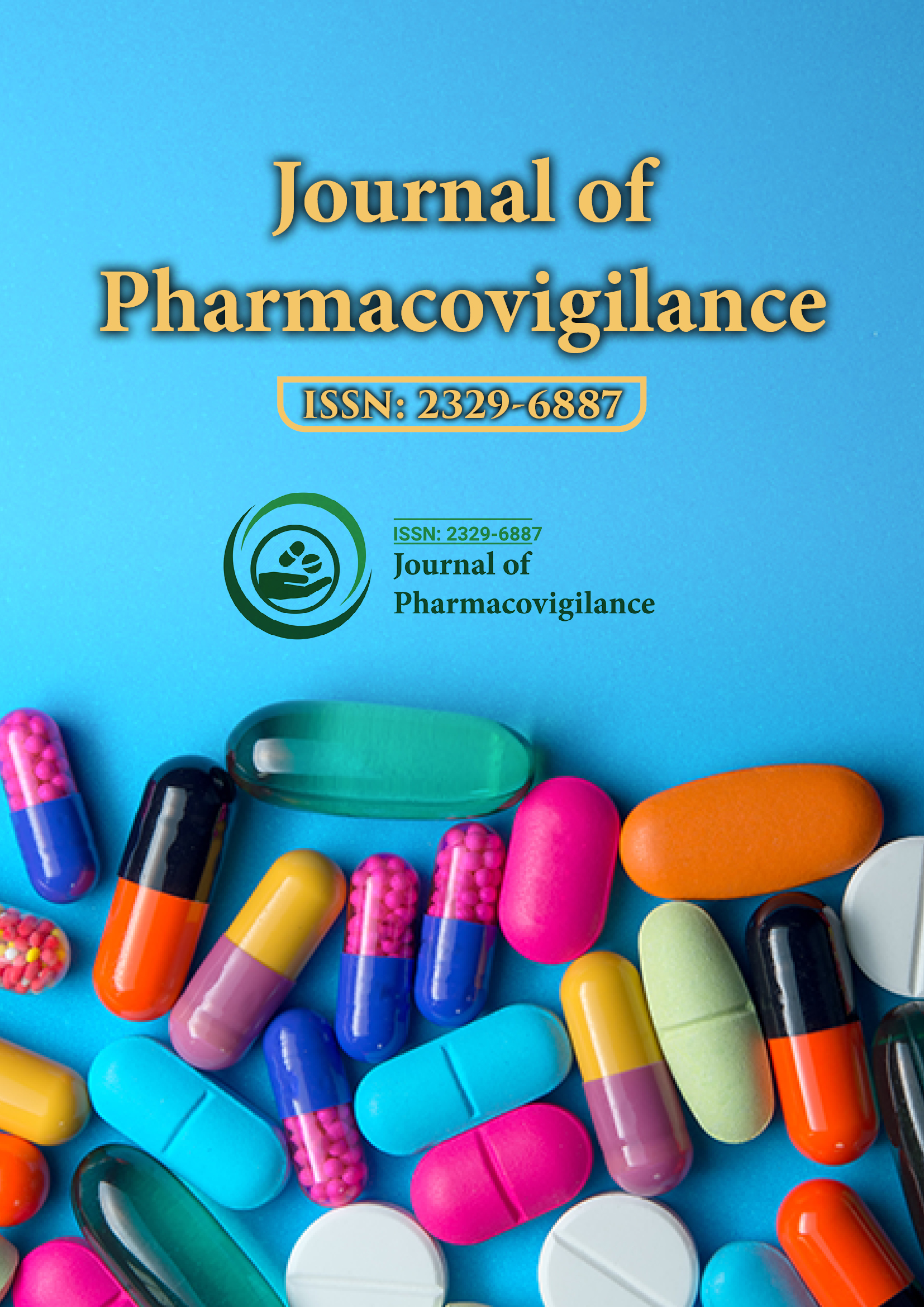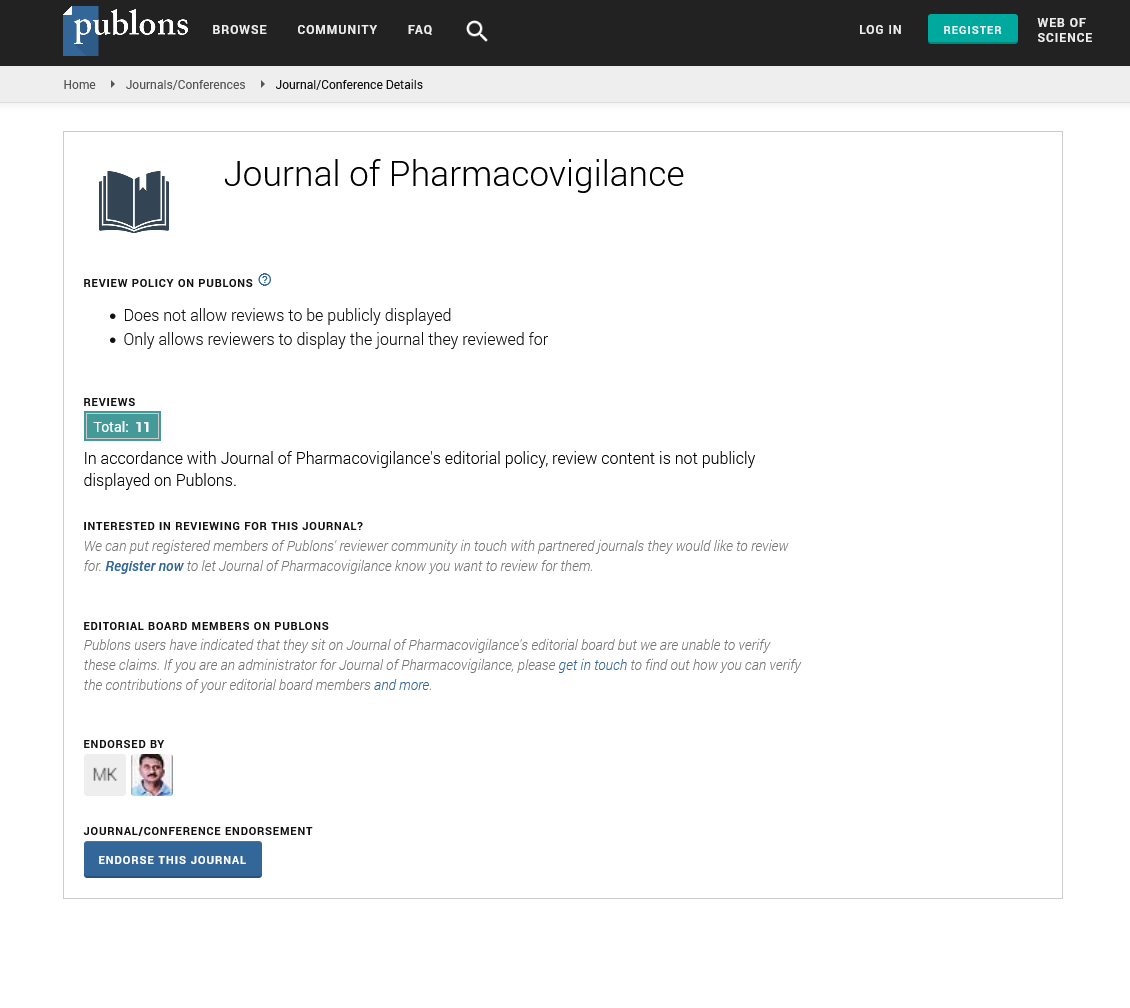Indexed In
- Open J Gate
- JournalTOCs
- The Global Impact Factor (GIF)
- RefSeek
- Hamdard University
- EBSCO A-Z
- OCLC- WorldCat
- Publons
- Euro Pub
- Google Scholar
Useful Links
Share This Page
Journal Flyer

Open Access Journals
- Agri and Aquaculture
- Biochemistry
- Bioinformatics & Systems Biology
- Business & Management
- Chemistry
- Clinical Sciences
- Engineering
- Food & Nutrition
- General Science
- Genetics & Molecular Biology
- Immunology & Microbiology
- Medical Sciences
- Neuroscience & Psychology
- Nursing & Health Care
- Pharmaceutical Sciences
Opinion Article - (2025) Volume 13, Issue 1
Nanomedicine Safety: Challenges in PV Monitoring
Leena Sarkar*Received: 03-Mar-2025, Manuscript No. JP-25-28635; Editor assigned: 05-Mar-2025, Pre QC No. JP-25-28635 (PQ); Reviewed: 19-Mar-2025, QC No. JP-25-28635; Revised: 26-Mar-2025, Manuscript No. JP-25-28635 (R); Published: 02-Apr-2025, DOI: 10.35248/2329-6887.25.13.503
Description
Nanomedicine, a rapidly advancing domain within pharmaceutical sciences, has introduced a new generation of therapies characterized by nanoscale drug delivery systems that offer targeted, efficient, and often less toxic treatment options. Despite their promising clinical potential, the unique physicochemical properties of nanomedicines pose unprecedented challenges to traditional Pharmacovigilance (PV) monitoring frameworks. The complexity of nanostructures, their interactions with biological systems, and the limitations of current safety surveillance methodologies have necessitated a reevaluation of how adverse events associated with nanomedicines are detected, interpreted, and managed in real-world settings.
Conventional PV systems were primarily designed to monitor small-molecule drugs and biologics. These systems rely heavily on spontaneous reporting, signal detection algorithms, and post-marketing studies to track adverse drug reactions. However, nanomedicines, by virtue of their engineered design and variable surface chemistry, often demonstrate unpredictable pharmacokinetics and biodistribution profiles that can elicit subtle or delayed toxicities not evident in preclinical or short-term clinical studies. For instance, the accumulation of nanoparticles in organs such as the liver, spleen, or brain may result in subclinical toxicity that escapes routine surveillance unless specifically investigated.
Moreover, nanocarriers like liposomes, polymeric nanoparticles, dendrimers, and metallic nanoparticles often exhibit behaviors at the cellular and molecular level that differ from conventional drugs. They may trigger immune responses, disrupt normal cell signaling pathways, or alter the function of the blood-brain barrier. These interactions can result in adverse outcomes such as Complement Activation-Related Pseudoallergy (CARPA), oxidative stress, or unintended genotoxicity. The diverse mechanisms of toxicity challenge PV systems to evolve from a model of passive reporting to one that incorporates mechanistic understanding and predictive biomarkers tailored to nanoscale interventions.
Another significant challenge lies in the lack of standardization in nanomedicine classification, characterization, and reporting. Unlike small molecules with well-defined structures, nanomedicines can exhibit significant batch-to-batch variability in size, shape, charge, and surface modifications all of which influence their biological activity and safety profile. Current regulatory frameworks do not yet provide comprehensive guidelines for capturing this variability within PV databases. As a result, it becomes difficult to establish consistent safety baselines or perform cross-product comparisons. This lack of uniformity hampers signal detection efforts and weakens the ability to perform meta-analyses or generate risk assessments with confidence.
Furthermore, adverse events related to nanomedicines may manifest in forms that are not easily attributable through traditional causality assessment tools like the WHO-UMC criteria or the Naranjo algorithm. Given the potential for delayed onset, cumulative toxicity, and organ-specific distribution, adverse drug reactions associated with nanotherapeutics may go unrecognized or misattributed. This is especially concerning in oncology and rare disease treatment, where nanomedicines are increasingly employed and the underlying conditions themselves can complicate safety assessments.
Real-World Evidence (RWE) and post-marketing observational studies must be adapted to capture nanomedicine-specific variables, including particle characteristics, route of administration, and co-administration with other therapies. Emerging technologies such as electronic health record mining, wearable biosensors, and patient-reported outcome platforms may play a role in addressing the limitations of current PV practices. However, these tools must be calibrated to detect subtle toxicities and long-term outcomes specific to nanotherapeutics.
International regulatory agencies have begun to recognize these gaps and are investing in research initiatives and collaborative frameworks to establish nanomedicine-specific PV guidance. The European Medicines Agency (EMA), the U.S. Food and Drug Administration (FDA), and the International Pharmaceutical Regulators Programme (IPRP) have issued draft guidelines and white papers outlining preliminary strategies. These include improving analytical methods for nanoparticle characterization, enhancing signal detection capabilities using big data analytics, and promoting global harmonization in terminology and reporting standards. However, implementation remains inconsistent across countries, and the lack of dedicated nanopharmacovigilance infrastructure continues to delay timely risk mitigation.
Citation: Sarkar L (2025). Nanomedicine Safety: Challenges in PV Monitoring. J Pharmacovigil. 13:503.
Copyright: © 2025 Sarkar L. This is an open access article distributed under the terms of the Creative Commons Attribution License, which permits unrestricted use, distribution, and reproduction in any medium, provided the original author and source are credited.

